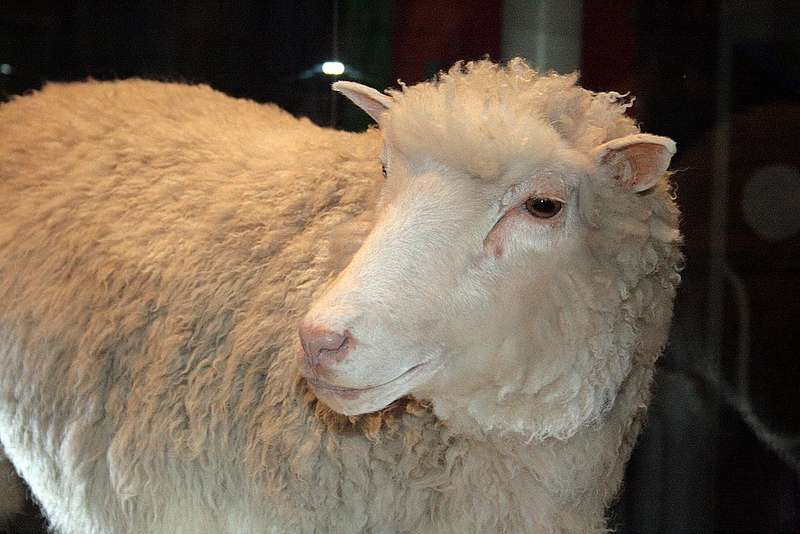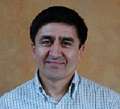A U.S. Cloning Pioneer’s Startling New Partnerships
 In a move that stunned the stem cell field, the first researcher to create cloned human cells—and to derive embryonic stem (ES) cells from them—has teamed with a man who once made a fraudulent claim to do the same.
In a move that stunned the stem cell field, the first researcher to create cloned human cells—and to derive embryonic stem (ES) cells from them—has teamed with a man who once made a fraudulent claim to do the same.
Under a confirmatory photo, a Korean newspaper last week reported an exploratory alliance between cloning pioneer Shoukhrat Mitalipov of Oregon Health and Science University, Woo Suk Hwang of the Korean animal cloning company HBion, and the Chinese stem cell banking company, Boyalife. Mitalipov created the first cloned human cells in 2013. Hwang only fraudulently claimed to create human cells in 2006—and since, clones largely pets.
The two groups are not collaborating academically, the globally respected Mitalipov stressed to Bioscience Technology. The unlikely duo are just teaming up to explore the idea of funding, with Boyalife, some cutting-edge technologies.
Mitalipov’s company, Mitogenome Therapeutics, “has several proprietary technologies including MRT (mitochondrial replacement therapy) and SCNT (somatic cell nuclear transfer, or cloning),” Mitalipov told Bioscience Technology. “We are at the early stage of licensing negotiations for these IPs to Boyalife in China. This is not an academic collaboration.”
Mitalipov’s cloning work
In 2013, Mitalipov pulled off a holy grail: the creation of the first cloned human embyros, from mature human cells, resulting in the first cloned human ES cells. A group co-led by Advanced Cell Technology’s (ACT) Robert Lanza confirmed the work months later.
The approach lets U.S. scientists use non-federal funding to create pluripotent cells—which form every cell of the body, and are highly proliferative—from adult human cells fused with unfertilized eggs. It potentially gives adults the ability to form limitless pluripotent cells from their own limited old cells—so, theoretically, cells that would not be rejected by their immune systems in cell therapy.
In 2007, the induced pluripotent stem cell (iPSC) method pulled off a similar feat, without controversial human eggs. But in many papers, iPSCs have been found more mutation-ridden than cloned cells. The issue is unresolved; study is ongoing. Still, renewed excitement for SCNT has been aroused—if ultimately, perhaps, to show science how to make better iPSCs.
“SCNT is alive now more than ever,” Rockefeller University developmental biologist Ari Brivanlou told Bioscience Technology. “We saw three papers come out in relative rapid succession demonstrating that human SCNT is feasible and can lead to the production of patient-specific stem cells….I believe research in the near future will focus on ways to either generate mature human oocytes in vitro, and/or on understanding what factors in the mature oocyte allow a ‘more normal’ reprogramming of somatic cells to stem cells compared to the classic transcription factor-based reprogramming.”
Mitalipov’s more clinic-ready mitochondria work
But of more immediate clinical interest is mitochondrial work Mitalipov performed using SCNT skills. Mitochondria are the battery packs of cells. They are passed down generations via the maternal egg. Mitochondrial DNA mutations can cause devastating diseases in offspring. And aging egg cell mitochondria may be key players in the rapid, if normal, dissolution of women’s fertility after 40.
 Mitalipov in 2013 reported in Nature he had successfully replaced defective mitochondria in human eggs. Some half of the eggs formed normal blastocysts, yielding normal human ES cells—rates similar to those of healthy controls. Earlier, he used a similar technique on monkeys. Four healthy monkeys were born in 2009. In the 2013 paper, Mitalipov reported the monkeys were still healthy.
Mitalipov in 2013 reported in Nature he had successfully replaced defective mitochondria in human eggs. Some half of the eggs formed normal blastocysts, yielding normal human ES cells—rates similar to those of healthy controls. Earlier, he used a similar technique on monkeys. Four healthy monkeys were born in 2009. In the 2013 paper, Mitalipov reported the monkeys were still healthy.
Some of the human eggs undergoing mitochondrial transfer did display fertilization problems not seen with the monkey cells: excessive pronuclear numbers. Study indicated this may have been due to premature activation of the eggs following incomplete meiosis. But similar problems arose in earlier years of monkey mitochondria work. The group reported they were already addressing the human problems. Indeed, they reported they could create, in each patient cycle, two embryos with new mitochondrial DNA suitable for clinical use.
Mitalipov has publicly said he is eager to try the approach in clinic. Such an approach, if it works, could revolutionize fertility therapies. But U.S. regulators have been slow to address the work, and the National Institutes of Health has been slow to fund it. Meanwhile, the U.K. parliament recently voted to lift a ban on using such techniques on patients.
In the U.K., the intent is to avoid mitochondrial disease, not infertility. It has generated controversy among scientists who believe more animal work is needed before babies are born with DNA from “three parents.” But it has also generated excitement among scientists who feel the technology is more ready for prime-time.
Mitalipov told Nature last week he is impatient. Boyalife has shown an interest in developing non-human primates for mitochondrial disease, and in maneuvering regulatory roadblocks, he said. He has repeatedly said he is interested in exploring the use of mitochondrial transfer to tackle fertility problems in the clinic.
The surprising Hwang angle
It makes a certain sense, therefore, that Mitalipov would explore options involving companies in countries more open to advancing the research. But the move that surprised many involved Hwang. In the early 2000s, Hwang’s Seoul National University group published two papers in Science claiming the first human cells were cloned. Both were retracted when scientists worldwide, Science editors, and later the Seoul government, found the data was fraudulent. Hwang was severely censured and fined. He is not allowed to work on human eggs in South Korea. He has, however, recently seen some success with animal cloning.
Mitalipov has repeatedly noted to Bioscience Technology that he is “in early stages of discussions.” Among issues being explored, he said, is what each party may bring to the table. Hwang’s animal cloning work is “among” the questions being “discussed.”
“I am a founder of Mitogenome Therapeutics Inc., and represented my company during discussions with Dr. Xiaochun Xu, CEO of Boyalife Group, and HBion, represented by Drs. Woo Suk Hwang and Gyu-Jin Rho,” Mitalipov told Bioscience Technology. “The topic was not academic research but rather, joint business opportunities in China related to animal biotechnology and commercialization of the Mitogenome's technologies.”
Mitalipov continued: “We signed an MOU (memorandum of understanding) that just states our intentions to form a joint venture in the future. Hwang and Rho (HBion), me (Mitogenome Therapeutics) and Xiaochun Xu (Boyalife Group) have agreed to work toward forming a joint venture in the future to work on commercialization of several technologies—not exactly on ‘mechanisms of cloning,’ which sounds more like basic research. The joint company will be based in China, initially.”
He added that he cannot verify reports in the press that Boyalife could invest as much as $93 million in the venture.
“I cannot confirm… the $93 million deal, which was a surprise. We have not discussed any of those details,” Mitalipov concluded to Bioscience Technology.

